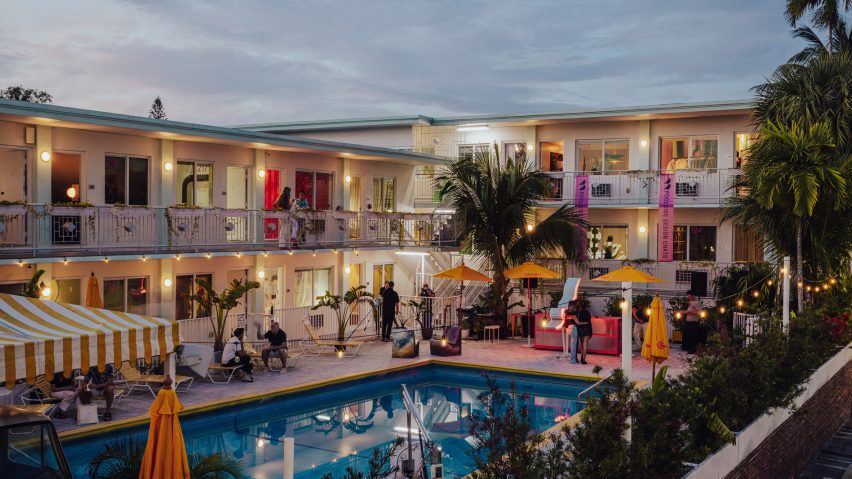
Alcova presents "investigation of design" at exhibition in Miami motel
Milan-based design exhibition Alcova has launched its Miami edition at Miami art week, meant to create a space for independent and experimental design studios at the annual event.
The exhibition took place at the Selina Gold Dust Motel in the north of Miami during the annual city-wide art festival.
More than 50 designers were showcased in solo and group shows in the motel, a three-storey structure with open-air causeways wrapped around a central pool, where the exhibition hosted talks and social space during the daytime.
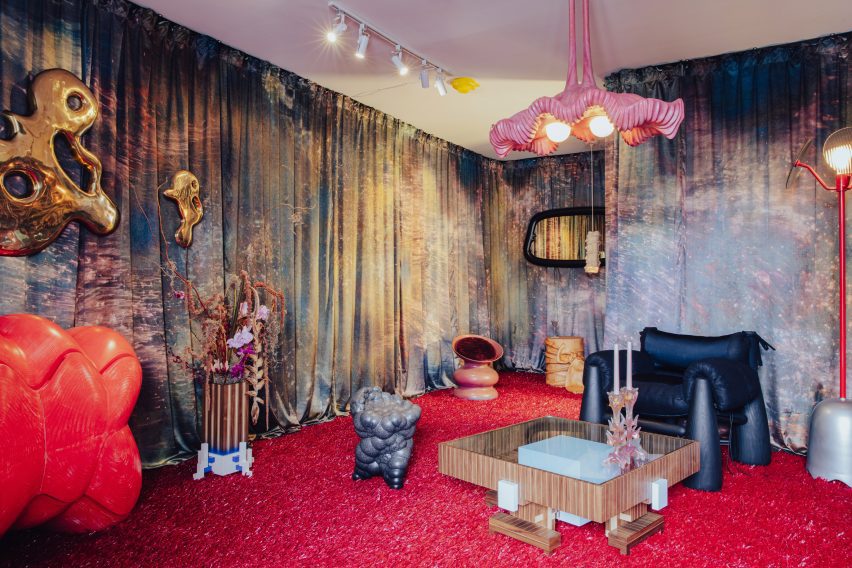
According to Alcova founders Joseph Grima and Valentina Ciuffi, the institution saw a gap in the programming during art week that it could fill. Miami was Alcova's first international exhibition.
"It was surprising to us – like something was missing," Ciuffi told Dezeen.
Alcova addressed a need for "more design to happen" in the city, she said, adding that they wanted the exhibition to also be "complimentary" to the other design offerings.
"We wanted to do something different from what everybody else was doing," added Grima. "And of course when you're doing something different there's very little precedent to base yourself on."
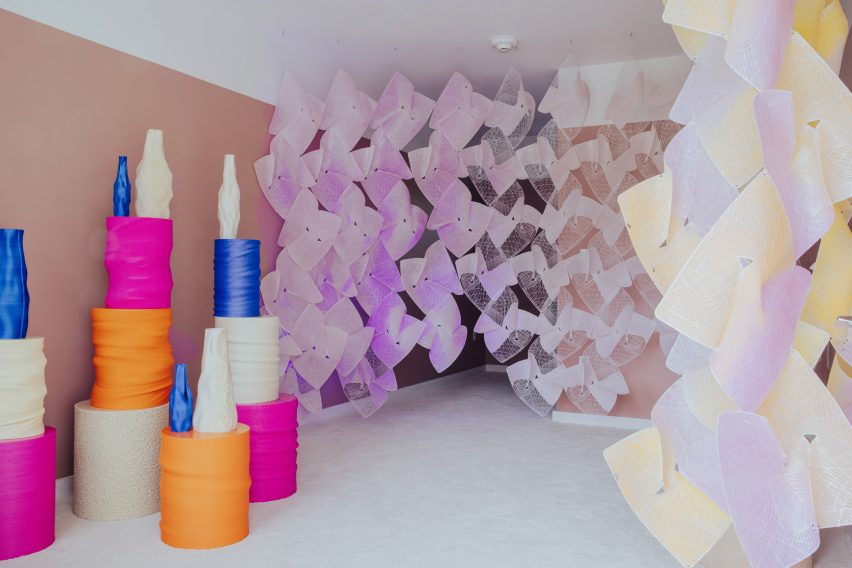
The pair also said that, although different from its usual heterogeneous spaces, the repeated scale of the motel room format resulted in "beautiful surprises" as the designers decorated their own spaces.
Chief among the concerns of the curators was to present an "alchemic reaction" between the designers involved. The exhibitions were grouped into several themes, which included Material Experimentation, Emergent Designers and New Way of Living with Colors.
"It's not as homologous even as Design Miami itself; it is a branching out into different fields of investigation of design," said Grima. "But nevertheless [the exhibitors were] bound together by this idea of looking for something, of research."
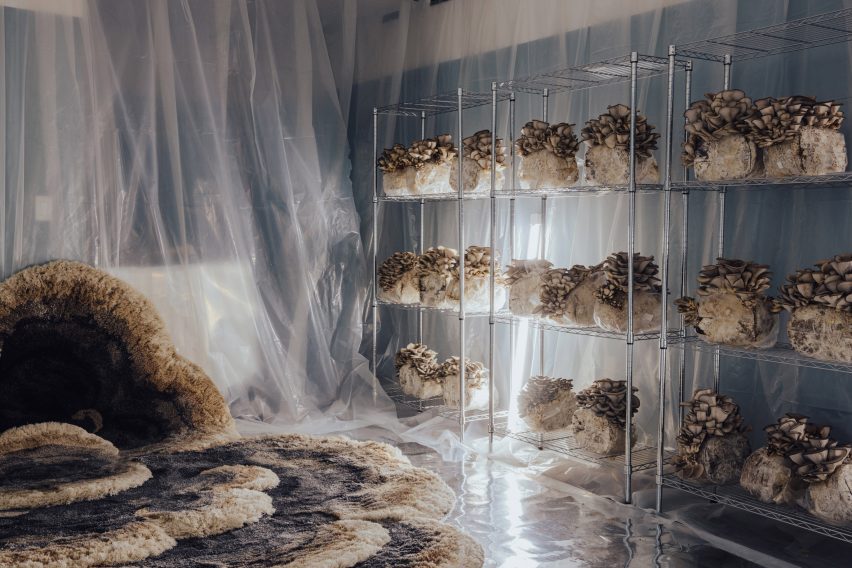
The curators selected several designers working with innovative materials, such as Slovakian studio Crafting Plastics! bio-based plastic decor objects and solar-reactive dividers. This theme was also the subject of a talk during the exhibition, in which Dezeen took part.
Danish outfit Natural Material Studio – led by the inaugural winner of Dezeen's Bentley Lighthouse Award, Bonnie Hvillum – showcased lighting with screens made from bio-polymers.
Belgium studio JOV, meanwhile, collaborated with Studio Mary Lennox to present a mushroom-shaped rug made out of wool, which was surrounded in the installation by shelves of live mushroom cultures.
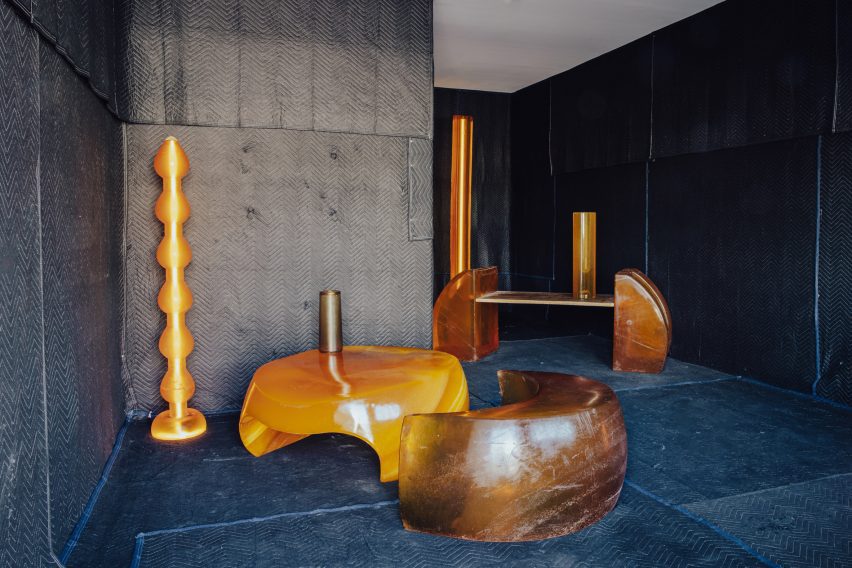
Designer Rich Aybar included a line of amber rubber furniture that was laid against a backdrop of the same blankets in which he shipped his pieces.
Netherlands-based Studio Loop Loop took the prompt of research-based material design strategies even further, providing insights into its innovative use of aluminium via a table with components and a pattern roller.
This was overhung by a chandelier surrounded by metal flaps dyed with the studio's natural dyes, which it has begun cultivating itself.
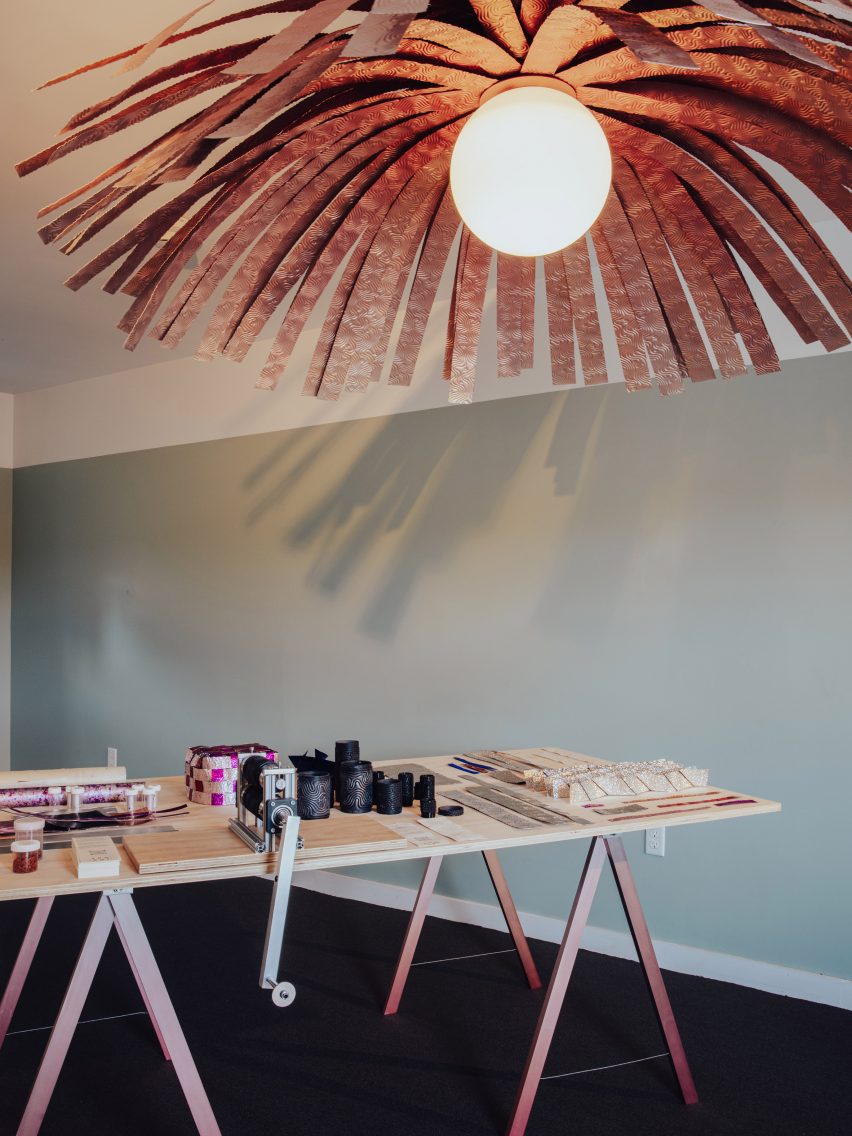
Important to the curators was also a focus on emergent designers, particularly those from the western hemisphere.
"There is no one similar to Alcova in the US," said Ciuffi. "It is very difficult for them to find a space and to come to Milan is more difficult for them."
Among these exhibitors was a group show organised by Brooklyn-based studio Forma Rosa, which included works by that studio as well as Californians NJ Roseti, Caleb Ferris, Tristan Louis Marsh, Wallpaper Projects and Sam Klemick.
Also among the Californian designers present was Objects for Objects, which created a series of furniture made with the multicolour pillars of trophies.
One of the most visually stimulating rooms was a metallic gold-lined room by CYKIK that featured a record with a sleeve that turned into a chair.
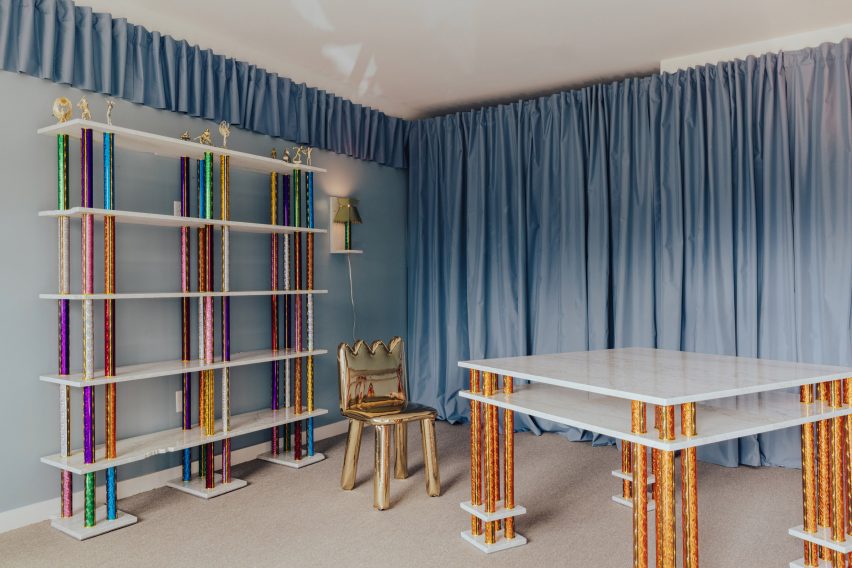
Among the works under the heading of New Way of Living With Color was a series of furniture with bases that made them appear to be dripping by Unform Studio.
At least one larger institutional player was involved in the curation: MAXXI – National Museum of 21st Century Art, which curated a series of smaller rooms with singular objects by designers such as Kostas Lambridis and Objects of Common Interest.
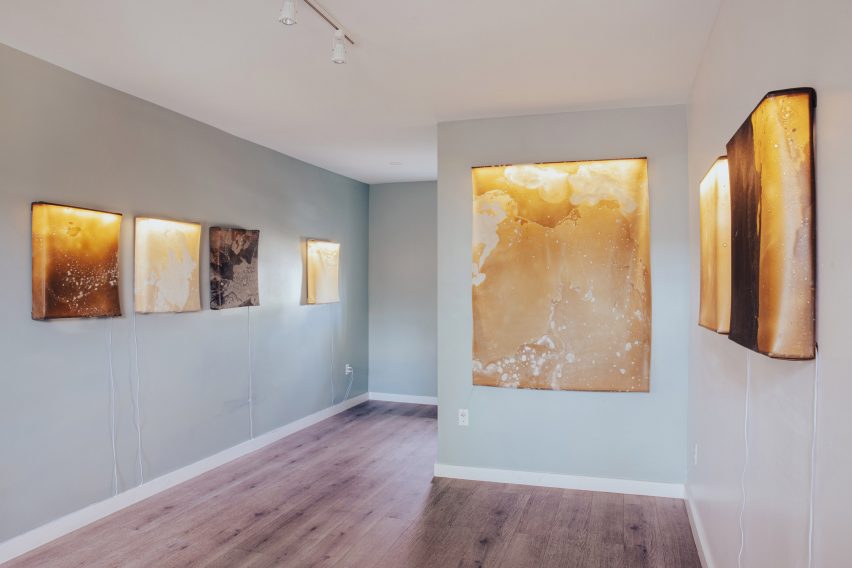
The Alcova team took a direct hand in creating spaces in a room called Alcova Project Space.
This space showed a collection of design objects under the heading Digital Ornamentalism and featured works by Ryan Decker and Hanna Lim, among others.
"Informed by extremely heterogeneous visual influences, the works presented here strike us for an aesthetic language that seemingly attempts to transmute the digital obsession of recent years back into material form," said Alcova.
Several market-ready furniture designs were also present, including works by Studio Jialun Xiong, Bieke Casteleyn and Dean Norton.

Grima and Ciuffi, who also hosted dance parties at the hotel's canal-side club throughout the week, said that they were pleased with the turnout and response from the crowd.
"It was really about resetting the atmosphere and the energy and about seeing that the kind of work that we're interested in is of interest to the Miami crowd," said Grima.
"So yeah, so I think that was super, super encouraging."
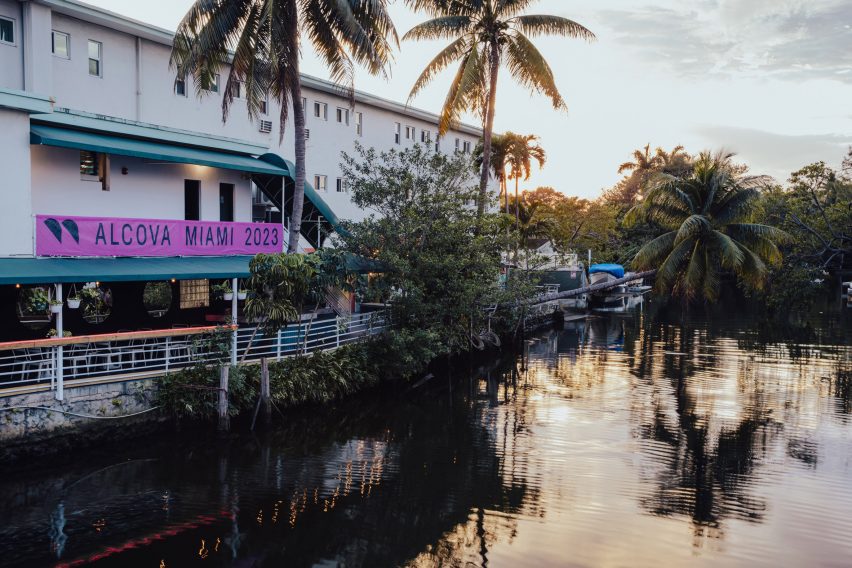
Other design exhibitions during Miami art week included Design Miami and a series of outdoor installations at the Miami Design District.
The photography is by Piergiorgio Sorgetti
Alcova took place at the Selina Gold Dust Motel in Miami from 4-10 December 2023. See Dezeen Events Guide for an up-to-date list of architecture and design events taking place around the world.